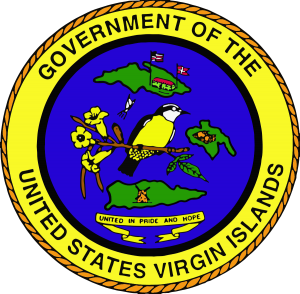Governor Mapp lobbied for Territory’s inclusion in federal program
Governor Kenneth E. Mapp has nominated 14 neighborhoods on St. Thomas and St. Croix as Qualified Opportunity Zones eligible for U.S. tax breaks under the massive tax bill passed by Congress last December, Government House announced today.
The nominated zones, which are considered 14 “low income census tracts”, are subject to the approval of the U.S. Department of the Treasury. As part of the Tax Cuts and Jobs Act of 2017, Congress created a new incentive to encourage investment in low-income communities by allowing investors who reinvest the proceeds of capital gains in qualifying property or businesses located in designated Opportunity Zones to defer and reduce their capital gains taxes.
Under the new tax law, U.S. investors who invest in qualified property in an Opportunity Zone may defer U.S. capital gains tax on the new investment for up to 7 years; reduce the amount of those capital gains by as much as 15%; and pay zero federal capital gains tax on any appreciation in value of that new investment.
“These new federal tax incentives will strengthen and complement the incentives available to companies and individuals under our Economic Development Commission (“EDC”) program,” Governor Mapp said. “I am hopeful that these new federal tax incentives can attract new investments in hotel development, retail businesses, and industry in our most underserved communities. They will also be a valuable incentive for businesses looking to rebuild after the hurricanes,” Mapp said.
By statute, Qualified Opportunity Zones are limited to designated “low-income communities” in States and Territories which meet certain criteria. The zones nominated by Governor Mapp include Christiansted and all of the western end of St. Croix, as well as most of the southern half of St. Thomas.
Governor Mapp also commended Senator Tim Scott (R-SC) for his leadership in developing the Opportunity Zone legislation and spearheading it through the Congressional process. The original proposal did not include the Virgin Islands or other U.S. Territories. After meeting with Governor Mapp last summer, Senator Scott agreed to expand the scope of eligible zones to include low income communities in the Territories.
The following example illustrates how the Qualified Opportunity Zone incentive works:
Designation of a tract as a QOZ is designed to encourage investment in the tract by permitting investors to defer and reduce the recognition of capital gain proceeds from other transactions. Consider a U.S. company that invested $10 million in a stock and sells that stock in 2018 for $20 million. Ordinarily, the $10 million gain would be subject to federal capital gains tax in 2018. If, however, within 180 days of selling the stock the company invests the $20 million in a QOZ, it obtains three significant benefits.
- First, it defers payment of federal capital gains tax on the $10 million gain until the earlier of the date it sells its investment in the QOZ or December 31, 2026.
- Second, it receives a 10% reduction in federal capital gains tax if it holds the QOZ investment for at least five years, and an additional 5% reduction if it holds the investment for at least seven years.
- Third, it avoids federal capital gains tax altogether on any further appreciation in its investment in the QOZ.
That is, if the company ultimately sells its investment in the QOZ for $35 million after seven years—a gain of $25 million—it will defer capital gains tax on the original $10 million gain until the date of the sale; reduce the amount of that capital gain by 15%; and pay no capital gains tax at all on the $15 million appreciated gain.
